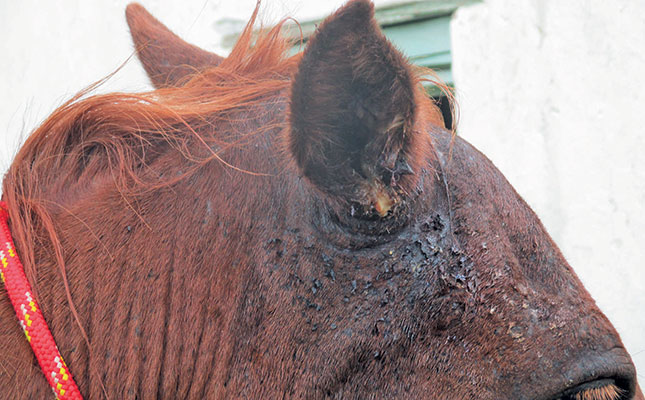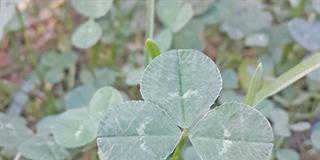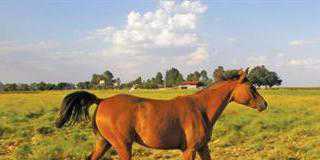
Flystrike (myiasis) in horses is poorly described in the scientific literature. The blowfly that lays its eggs in the damaged ear canals of horses is probably either Lucilia
The blowfly that lays its eggs in the damaged ear canals of horses is probably either Lucilia cuprina or L. serratia, both of which cause flystrike in sheep.
L. cuprina feeds on rotting carcasses and vegetable matter, as well as the flesh of living humans and animals.
It is famous for its role in forensics; the life-cycle intervals of the four stages – egg to larvae (maggots) and pupa to adult – are used to estimate the time of death in a decomposing corpse.
In South Africa, the causes and signs of flystrike are well described in Merino sheep. Adult females lay eggs in batches of between 50 and 250 on soiled, wet fleece, or in open wounds cause by shearing or castration.
The eggs hatch in eight to 72 hours and the larvae burrow into the wound, secreting proteolytic enzymes that melt body tissue and tearing at the flesh with strong oral hooks.
The animal can literally be eaten alive as more blowflies are attracted to lay their eggs on the rotting flesh.
The disease is most common during warm, wet weather in late summer.
In the case of horses, myiasis also occurs in warm, wet weather. Although flies are drawn to any infected wound, the ears are a common target.
The original lesion that attracts the blowfly female is likely to have been caused by the brown ear tick (Rhipicephalus appendiculatus). These pack into a horse’s ears to suck blood.
Biting flies join in the orgy, sucking blood from the inner surface of the ear and sometimes causing summer sores as they transmit brown stomach worm.
Maggot eggs are squirted deep into the ear, where the larvae hatch and start gorging themselves. Horses rub their ears and faces over branches and fences, making the injury worse.
Prevention
As this is a multifaceted disease with several causes, prevention is not simple. In my experience, control of the brown ear tick usually prevents outbreaks of ear maggots.
Cypermethrin or deltamethrin sprays used in late summer to prevent midges transmitting African horse sickness are effective against brown ear ticks.
Strategic oral deworming with ivomectin, deltamethrin or moxidectin in early spring and late summer also kills these ticks.
Treatment
Treating an affected horse is difficult as the animal may need a tranquilliser or anaesthesia to allow cleaning of the ear canal. Antibiotics, anti-inflammatories and pain killers are essential.
Wound sprays registered for flystrike should be used with caution after cleaning the ear canal, and must be registered for use in horses.
Ivomectin and deltamethrin are known to kill maggots when used topically, and small amounts (1mℓ to 2mℓ/ear) can also be dripped over maggots. Moxidectin is effective against maggots and brown stomach worm. It should be given orally at the correct dose only after recovery from tranquillisers or anaesthesia.
Dr Mac is an academic, a practising equine veterinarian and a stud owner.













